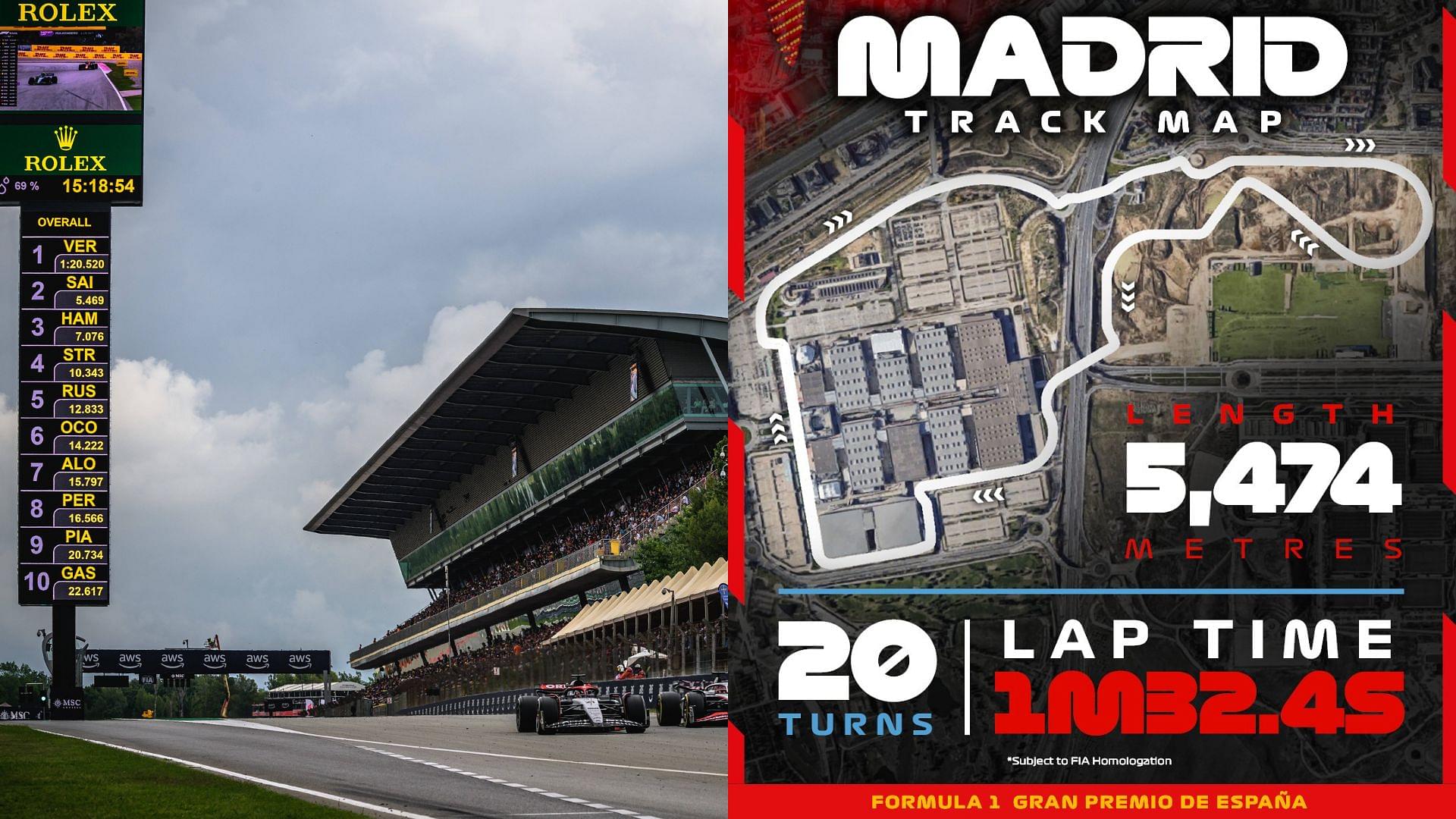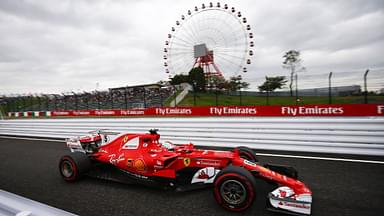F1’s philosophy has changed immensely in the past few years. They now seemingly put marketing ahead of the quality of racing. F1 journalist Vincenzo Landino expressed his viewpoint on this topic, with the Madrid F1 race as the reference point. Formula 1 confirmed that the Spanish GP will go to Madrid on a modern street track in the city center from the 2026 season onwards. Landino has questioned the motives of another street track race and cited that it’s “marketing first, racing second”! Naturally, a race in the middle of the city can help the organizers make a lot of money and economic impact. Currently, the Madrid Grand Prix is estimated to contribute about $490 million.
On the latest episode of The VF1 show, Landino stated, “Everything is about marketing, whether you like it or not. Look at what we are hearing about another street track in Madrid, instead of the Barcelona race on a purpose-built track.”
Landino summarized what a street race represents from a marketing perspective. He stated that any Grand Prix on a street track is more marketable with its central city location and accessibility to get more footfall and eyeballs. This in turn naturally helps the local businesses and employment with a revenue increase.
According to news.faharas.net, the Madrid F1 event is estimated to contribute about $490 million (€450 million) annually to the city’s economy. It will also generate over 8,200 jobs. For reference, the Las Vegas GP has a projected economic impact of over a staggering $1.2 billion.
Landino also cited that the Madrid circuit being a street track may not provide good racing. With the current generation of F1 cars being quite big, a narrow street track will always pose overtaking challenges.
In stark contrast, the track in Barcelona is wide and fits the old-school nature of F1. However, fans have complained about the lack of quality racing at the Circuit de Barcelona-Catalunya too.
Despite this, fans have disliked F1’s decision to bring Madrid to the calendar, which may effectively phase out Barcelona. Social media forums are actively showcasing this narrative, as they would rather have a permanent race track than another street track, which have increased in F1 in the past few years.
Will Barcelona drop off the F1 calendar as the Spanish GP will now take place in Madrid?
F1 CEO Stefano Domenicali has highlighted the significance of the Spanish market as a reason for bringing Madrid to the F1 calendar. Meanwhile, he also cited that this does not effectively drop Barcelona from F1’s purview.
As they have an existing deal until after the 2026 race, they may look to extend it as well. Nonetheless, Madrid-born driver Carlos Sainz is delighted at his home city hosting the Spanish GP.
Sainz expressed his feelings on Twitter (now X), saying, “As a Spaniard and as a Madrid native, today is a very special day and one to feel proud of. The @F1 returns to Madrid! See you in 2026!”
Como español y como madrileño, hoy es un día muy especial y para sentirse orgulloso.
La @F1 vuelve a Madrid! Nos vemos en 2026!As a Spaniard and as a Madrileño, I’m proud of such a special day.
Welcome back to Madrid @F1! See you in 2026! https://t.co/QbabMINbMB— Carlos Sainz (@Carlossainz55) January 23, 2024
However, beyond the F1 paddock, this move has become a bone of contention between the rival cities of Madrid and Barcelona. A politician from the former city defended the move by citing they “also have the right to receive” investments and enhance their city’s economy with an F1 Grand Prix.
Will the Madrid street track be beneficial for F1?
The Madrid city track will be more convenient for fans to attend with more public transport accessibility. So, it certainly scores a point over the Barcelona track which is on the outskirts of the city. Therefore, from an accessibility perspective and F1 wanting more audiences at the Grand Prix, Madrid checks out well.
Now, how is the street track going to be in the Spanish capital? It is technically a semi-street circuit, with both street and permanent sections making up the track. The length of the circuit will be 5.474 km (3.401 miles) with 20 turns around the IFEMA Madrid exhibition center.
Let’s go racing in Madrid!
Say hello to the brand-new circuit built around the @IFEMA Exhibition Centre ✨#F1 pic.twitter.com/klysY8HAiT
— Formula 1 (@F1) January 23, 2024
F1 projects a qualifying lap time of 1 minute and 32 seconds around this track. Looking at the track layout, it seems to have taken inspiration from the 90-degree corners of Baku and Las Vegas, the famous Istanbul Turn 8, and some of the fast-flowing corners of the Jeddah street circuit. All these tracks have given good racing, so one would want to be optimistic about Madrid.








